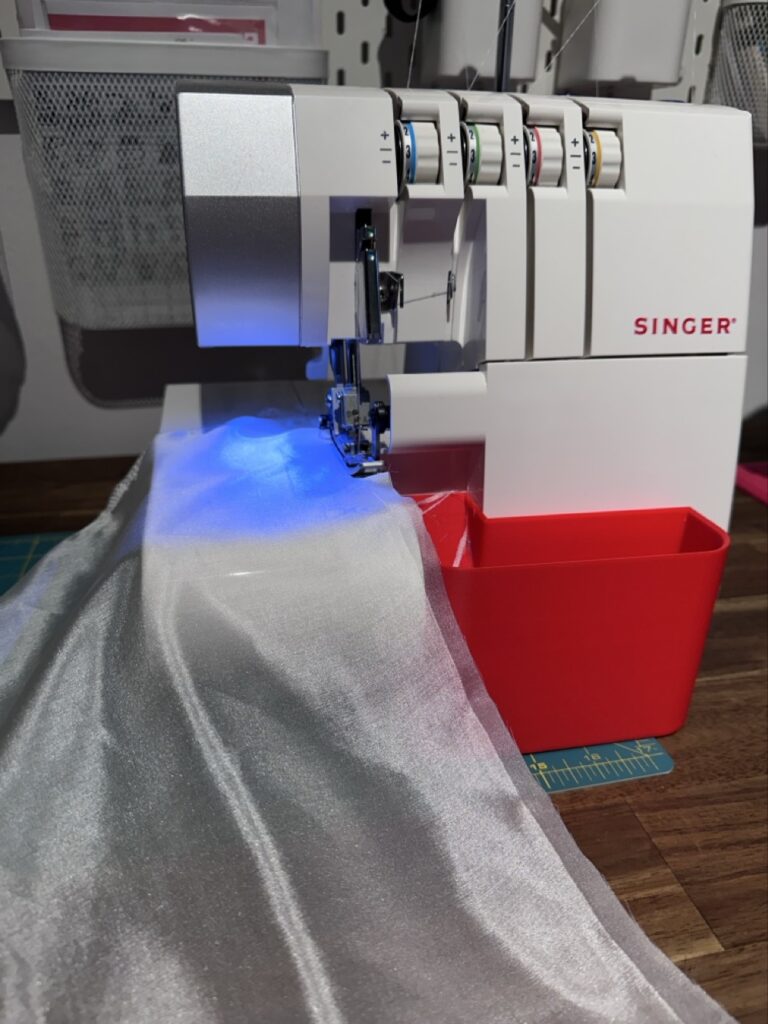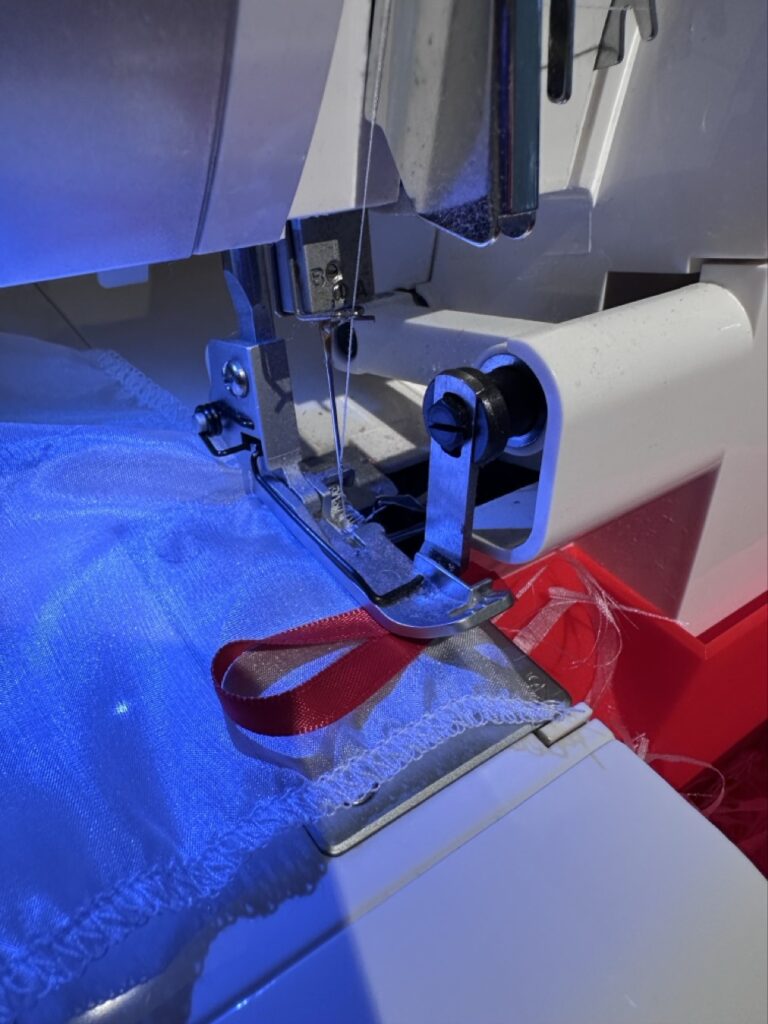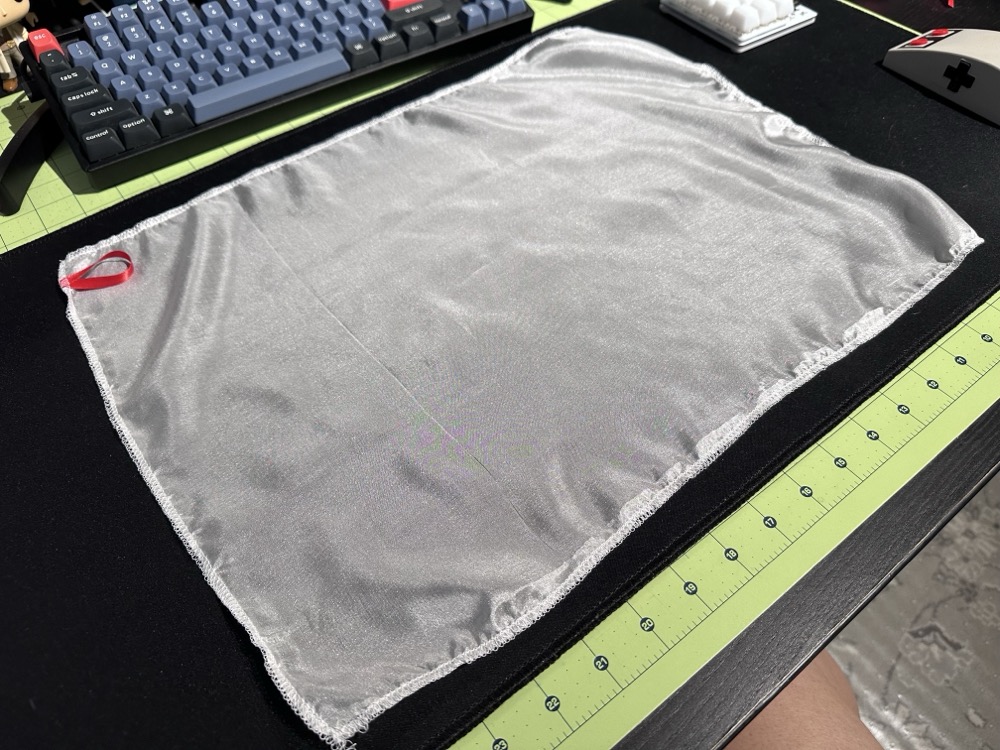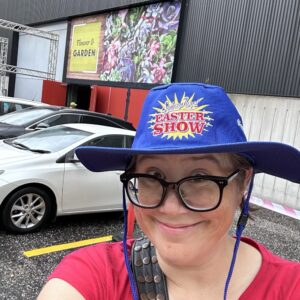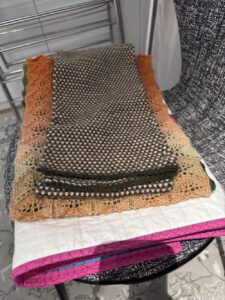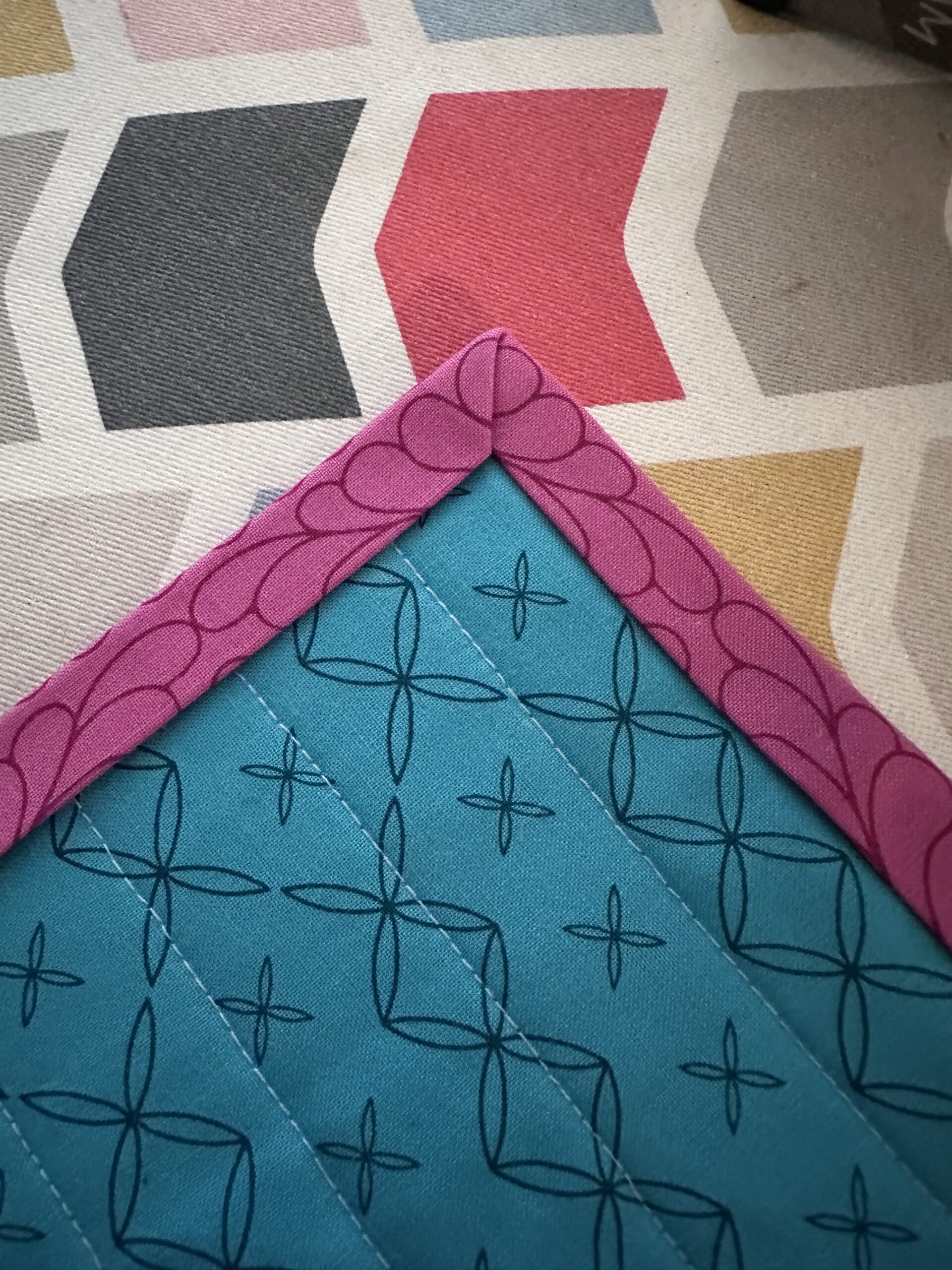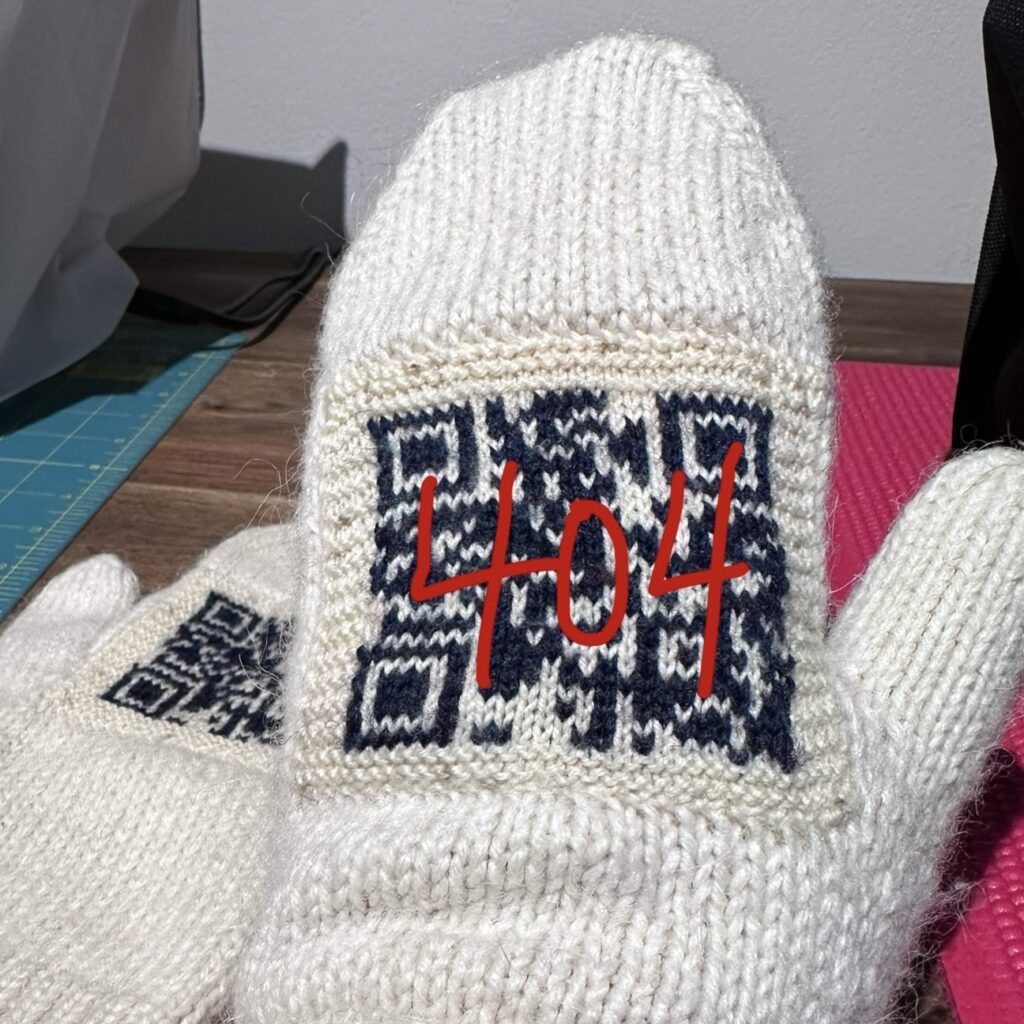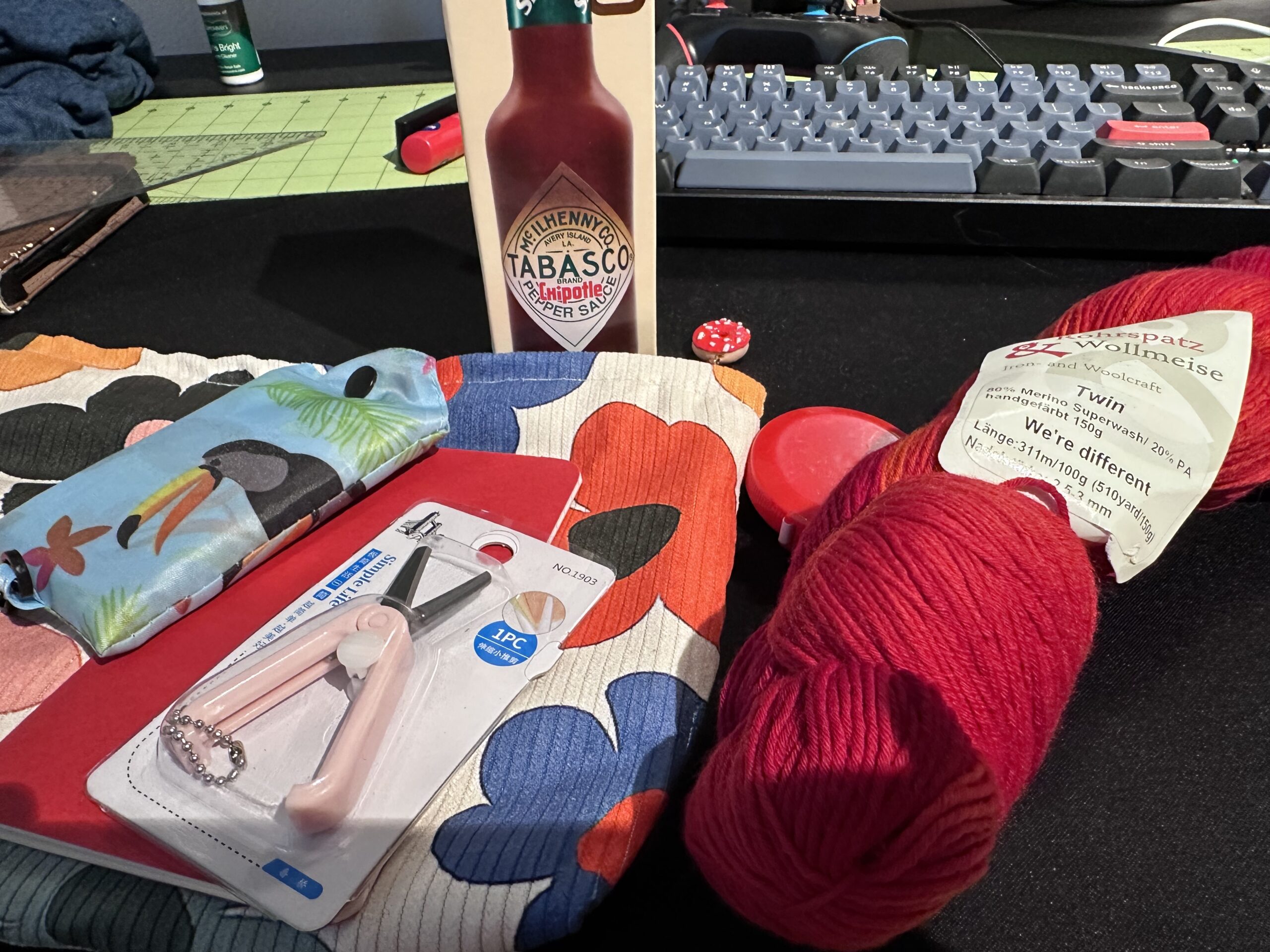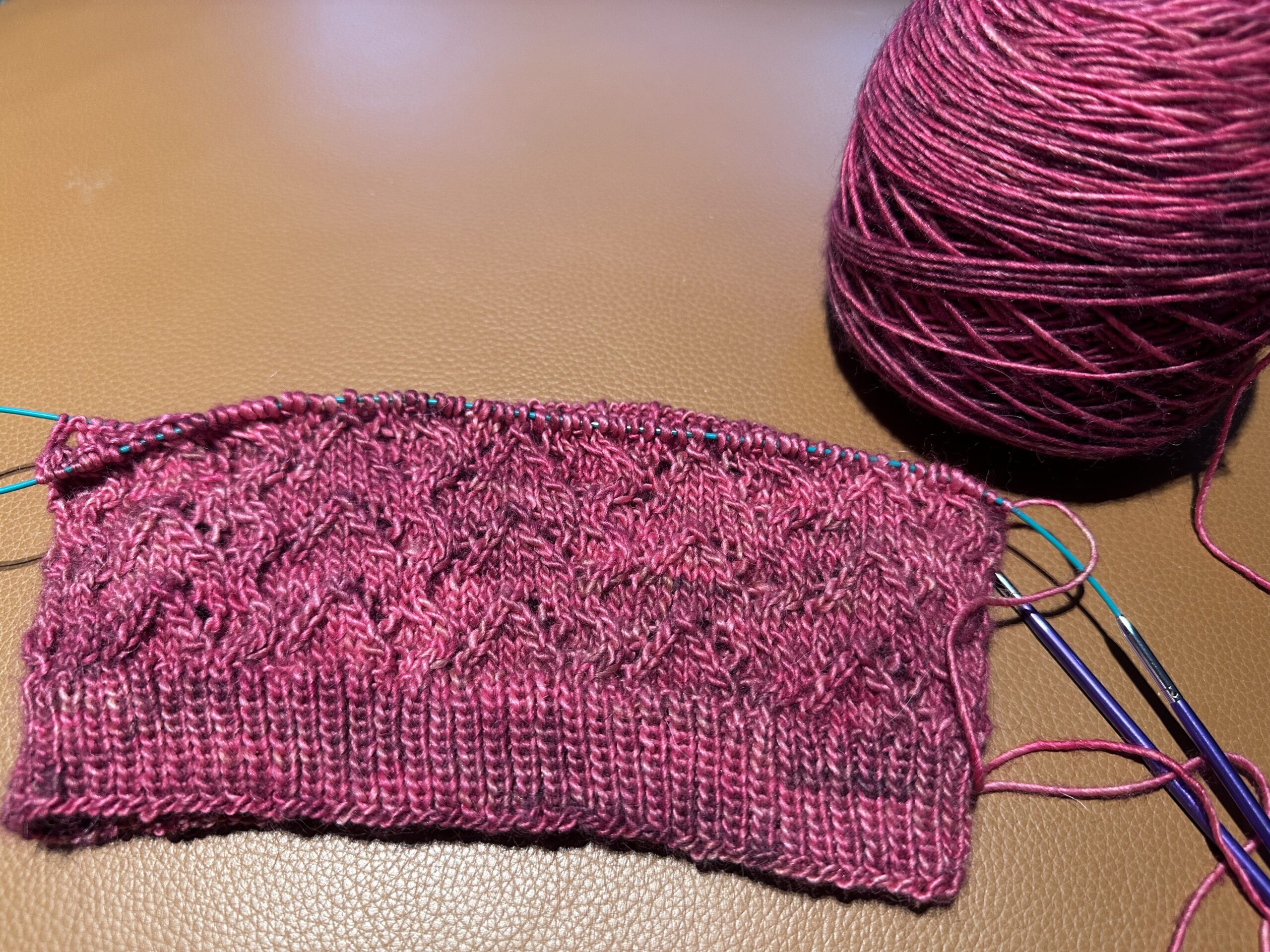I was reminded while I was sewing the other day that I really do need a press cloth. This is a piece of fabric you put over your work when you are pressing seams, to keep the fabric from potentially getting scorched. We used them in my sewing class with Gertie a few years back, and I seem to recall they were silk organza. I’ve seen this recommended in a few places because silk has a high burn point and it’s transparent enough to see your work through it. I looked them up recently online but couldn’t really find any for under $20 AUD. Then today I found myself at Spotlight and realised I could make my own. They had one bolt of silk organza at $47/m, so I bought 30cm of it for $14.10. Then I cut it into three pieces of roughly 12″ x 18″ (31cm x 46cm) and overlocked the edges to keep them from fraying too much. I also cut a tiny bit of ribbon and put that in the corner so you can hang it up. That’s one for me, and two for friends for < $5 each!
